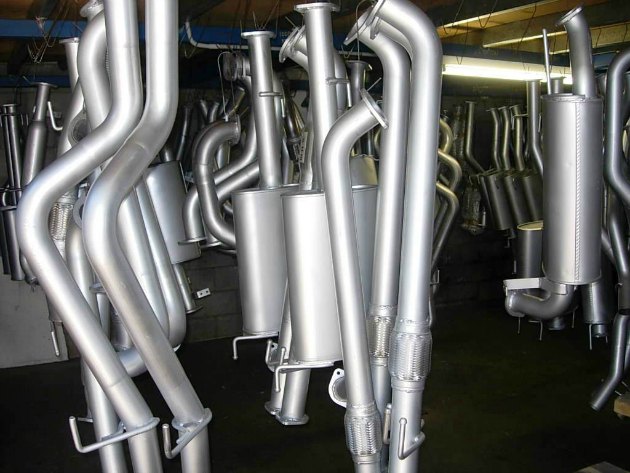Discover the Different 4Wd Exhausts & the Specs That Set Them Apart
Upgrading your exhaust system is one way to improve the engine flow while on an off-road cruise, where dust and dirt are present. The better your engine breathes, the more power it’s going to produce, and the better it will sound. Both of these things can easily be done by upgrading your stock exhaust with an off-road 4Wd exhaust with larger diameter pipes, cleverly designed and created from stainless or aluminised steel.
Why are the materials so important? Well, because aluminised steel and stainless steel (both T304 and T409) are higher grade than standard steel. What this means is that they are corrosion resistant, durable, and work well in high heat.
Aluminised steel is commonly used in both OEM and aftermarket exhausts, it’s extremely affordable and perfect for cruising in dry weather conditions. T304 stainless steel on the other hand, is non-hardening under heat and maintains its polish even in the toughest conditions and works well in all climates. T409 is even higher grade than the aforementioned two as it’s stabilised by titanium, however, it might be significantly more expensive.
Besides the materials, the other essential thing to consider when looking for an upgrade for your 4Wd exhaust, is whether you want to go with a single or a dual 4Wd exhaust.
- Single exhaust systems terminate the exhaust out of a single tail pipe and muffler. This is standard for most 4-wheelers. They’re commonly cheaper because they have fewer components and require fewer modifications to install. They offer a stealthy look while still giving you the increased performance and sound you’re looking for. Simply put, they increase performance, fuel economy, are easier to install, improve exhaust note, cost less and have a stock/stealthy appearance.
- Dual exhaust systems terminate through two mufflers and two tail pipes. However, there are some cases when dual exhausts still use only one muffler. They terminate straight to the sides or the back of the vehicle. As aforementioned, they can be dual exhausts or only have the appearance of one. True dual exhausts have header back type of system and keep both banks of the engine separated, unless modified by an equalization tube. The “fake” dual exhausts have an axle-back or cat-back system. In this case, the stock merged stream is unmerged and exited in a dual-pipe fashion. Both types increase performance, improve appearance and sound.
A more minimalist approach that you can opt for are cat-back and axle-back exhausts. Axle-backs typically begin before the rear axle and include tail pipes, tips, mufflers and over-axle piping. They offer small performance benefits as you replace very few parts, but are extremely cost-effective. Cat-backs expand upon the axle-back and feature midpipes, tailpipes, mufflers, over-axle pipes and tips. Just by adding midpipes, the exhaust flow will increase and your vehicle will benefit from mileage and horsepower improvements.
